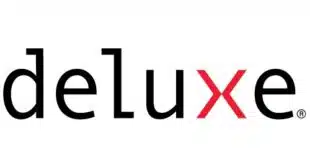n
With Cyber Monday sales volumes up an estimated 18% to 20% over the same day last year, consumers appear to be showing a willingness to spend more online. And they may be starting to use credit cards more often, reversing a recent trend away from credit, according to a research report released on Monday.
n
Online sales for the year will reach $309 billion, up 16% from $266 billion in 2010, according to the report. That volume will grow to $346 billion next year and $444 billion 2016, the report forecasts. General-purpose credit cards will capture 40% of online spending in 2011 and 2012, level with 2010, but that share will climb to 45% by 2015 as issuers promote credit and consumers shake off the aversion to credit cards they developed during the deep recession, the report says. Online spending on credit cards will hit $123 billion this year, up from $108 billion in 2010, and will rocket to $201 billion by 2016—a 10.2% average annual growth rate.
n
Along with the turnaround in credit cards will come a decline in debit card use as issuers react to recent regulation by reining in debit, says Beth Robertson, director of payments research at Javelin Strategy & Research and author of the report, “4th Annual Online Payments Forecast, 2011-2016.” Debit will suffer because of the Federal Reserve’s interchange caps for issuers with more than $10 billion in assets and tighter regulation of overdraft fees, she says.
n
While Bank of America Corp.’s recent effort to levy a $5 monthly fee for debit card use triggered a political firestorm, forcing the banking giant to ditch the plan, banks are finding other ways to shift consumers from debit to credit. These include account fees, a withdrawal of rewards programs on debit cards, and even programs that allow cardholders to transfer debit rewards to credit cards, Robertson tells Digital Transactions News. “When people open a new account, they will not be encouraged to get a debit card,” she says. Instead, they will likely be issued a generic ATM card that won’t work at the point of sale.
n
All this will add up to a loss of online share for debit. That share will peak at 30% this year, up from 29% in 2010, and will drift downward to 21% over the next five years, the report forecasts. Payment volume online will reach $93 billion this year, peak at $102 billion in 2014, and then lose nearly all of that gain, falling to $95 billion in 2016, for a meager 0.3% average annual growth rate over the five years.
n
Another rising star online is alternative payments, especially services that allow consumers to tap spot credit, like eBay Inc.’s Bill Me Later. Overall, alternative payments will account for 17% of online volume this year, the same as in 2010, but will expand to 19% by 2016. Already, some 49% of consumers report having used an online alternative-payment service in the past year, nearly on a par with debit cards (52%). Alternatives will account for $52 billion in online spending in 2011, up 13% from last year.
n
Adoption of Bill Me Later, which eBay bought in 2008 for $945 million, has benefited from the credit service’s pairing with eBay’s PayPal unit. Some 14% of consumers report having used Bill Me Later, up dramatically from the 1% who had adopted the service in 2010, according to Javelin research. Now part of the PayPal wallet, Bill Me Later gains from the merchant acceptance and consumer promotion PayPal can bring it, Robertson says. It has also been helped by consumers’ gradual turn back to credit-based products, she says.
n
Nascent efforts to bring PIN debit to the Internet are not likely to offset the decline in debit, Robertson says. While online merchants might be attracted to PIN debit’s lower fraud rates, she says merchants and consumers have not so far shown enough interest in the product to warrant optimism. A number of EFT networks have over the past couple of years introduced PIN debit for online use, but adoption so far by merchants has been limited. “We just haven’t seen that happening to date, so I don’t think it’s going to make a difference,” Robertson says.
n
But consumer spending at the outset of 2011’s holiday season bodes well, especially for credit cards, Robertson notes. “People were concerned whether we’d see a flat holiday season,” she says, but with the Black Friday and Cyber Monday results, “in fact we’re seeing an increase, which shows some confidence in the economy.”





